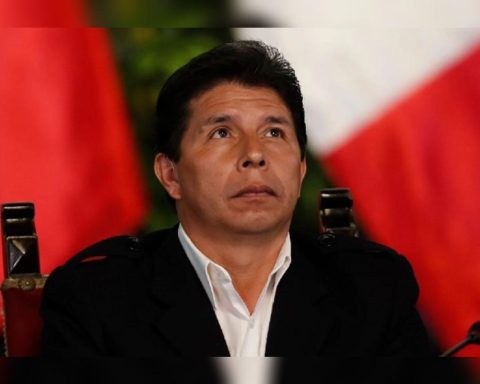She starred in the first female orgasm in the history of world cinema in the film Ecstasy (1933), she shone at school for her intellectual gifts, she was telecommunications engineer and sat the bases of the technologies that we know today as Wifi and BlueTooth. To talk about Hedy Lamarr is also to recount the ordeal she experienced during her forced marriage, the persecution she went through and the recognition that came late, when her patent had already expired. Remembering her is not only a way to sweep away these injustices, but also to bring to mind a key woman in the history of science and technology, 108 years after her birth.
He was born in Vienna, Austria, on November 9, 1914 and his real name was Hedwig Eva Maria Kiesler. She played the piano perfectly, an instrument she learned as a child by listening to her mother. Her father was a banker and she was her only child. At the age of five, she was already disassembling and putting together little music boxes, and at 16 he began his studies in engineering. She left them three years later after her dream of being an actress and entered the School of Dramatic Arts in Berlin. Still she Hedy She never abandoned her interest in science and technology, and the turns of life would later lead her to put her technical knowledge at the service of society.
She shot more than thirty films, she was also a screenwriter and producer, and she is known for the role of Delilah that she played in “Samson and Delilah”. But his popularity was reached in another film: he was the star of “Ecstasy”, shot in Czechoslovakia, the first film to show a female orgasm in the cinema and where she performed nude. A revolution for the time, in 1933. Although, as she later stated, the shots of her without her clothes had been captured by director Gustav Machaty with a telephoto lens, and she had not given consent because he had been assured that it would be blurred by distance.
The film became very famous, but it was very controversial and earned him censorship, convictions for sexual scandal and even the banning of the film in theaters. This became a problem for Hedy’s parents, so at the age of 19 she was forced to marry the Austrian arms manufacturer Friedrich Mandl, who bought all copies of the film to destroy them, Valeria Edelsztein recounted in her book “Scientists. They cook, clean and win the Nobel Prize (and nobody knows).” Mandl is said to have spent the equivalent of five million dollars in today’s dollars to acquire all the copies.
Their marriage was an ordeal: Mandl was very jealous and she couldn’t do anything without his permission. She lived surrounded by luxuries in the castle of Schwarzenau, but under the permanent surveillance and censorship of an authoritarian and controlling husband, who did not allow her to be an actress and was also member of the Nazi party. Hedy later married five more times and had three children in all. During her marriage to Mandl, who held her almost like a prisoner, she took the opportunity to resume her engineering studies and one day, after four exhausting years, she finally managed to escape.
But it wasn’t easy because Mandl’s bodyguards chased her for days, told the physicist Laura Morrón on her specialized science site Los Mundos de Brana and Mujeres Con Ciencia. When she succeeded, she boarded the Normandie ocean liner bound for the United States and there she met film producer Louis B. Mayer, one of the founders of Metro-Goldwyn-Mayer, who offered her a job. But on one condition, that she change her name so that it would not be associated with “Ecstasy”.
Hedy Lamarr was chosen, in memory of silent film actress Barbara La Marr.
Actress and inventor Hedy Lamarr (1914-2000) passed away on January 19.
Together with the composer George Antheil, he invented a first version of spread spectrum – a modulation technique used in telecommunications.
He told us about her @lauramorron https://t.co/dXzwhowS90 pic.twitter.com/udPbhuoVFp– Women With Science (@womanawareness) January 19, 2022
The inventor of Wi-Fi
Considered the “most beautiful woman in the history of cinema”, Hedy is also known as the inventor of Wi-Fi. Together with his friend and pianist George Antheil, in the midst of the Second World War, they discovered how to interfere in the code of the remote-controlled torpedoes, widely used and with great success by Nazi submarines in naval battles.
Both devised “a secure secret communication system radio guidance that used the technology of frequency hoppingdeveloped to help the naval forces of the Allies,” Carla Arias, Training and Development leader of the Girls in Technology organization, told Télam.
Edelsztein details that what they achieved with their invention was to control torpedoes remotely by means of rapid changes in the emission frequency, which later became known as “frequency hopping” (frequency jumps), without being interfered with. “If there is not a single frequency, it is much more difficult for a third party to detect it and get in the middle.”
The system, created based on the mechanism of a player piano, allowed radio signals to jump between 88 different frequencies in a coordinated manner between the receiver and the transmitter, while an unauthorized person only heard an intelligible signal. Hedy was thus the inventor of the first version of the technique of spread spectrum system, which he patented with Antheil in 1942 under the name “Secret Communications System” (US2292387A).
The Secret Communications System “was brilliant but, as the technological development at the time was very poor, it could not be put into practice at the time,” Edelsztein explained. In fact, he continued, twenty years had to pass for its first application, in 1962, during the missile crisis, when the United States discovered that the Soviet Union had placed nuclear missiles on Cuban territory. It was used by the Navy in the remote control of tracking buoys.
In the 1980s, the system “began to be implemented in wireless data transmission and became lbased not only on 3G cellular mobile telephony, but on practically all modern wireless digital communication systems, such as Wi-Fi, Wlan and BlueTooth“, he highlighted.
Faced with such a discovery, Hedy received no money or recognition. Rather she came to him too late.

A brilliant woman with late recognition
“Like many other women, she had to make a lot of effort to be recognized for her invention and, in fact, after patenting the invention she did not receive any financial or symbolic compensation. Hedy Lamarr was also an actress and prejudice caused recognition to be even more difficult,” stressed Carla Arias.
Only in 1997 (56 years after filing the patent) did he receive the Pioneer Award. Laura Morrón recounts that the bitterness due to the late recognition had grown so much in Hedy to the point that when they communicated this distinction to her “she remained unperturbed and commented briefly: ‘It was time’ (it’s about time).
The following year he was awarded the Viktor Kaplan medal of the Austrian Association of Inventors and Patent Holders, and in 2014 it was included in the National Inventors Hall of Fame of the USA.
She died on January 19, 2000 and 14 years after her death she was finally recognized in Vienna, where her remains rest (while half of her ashes were scattered in a forest near her birthplace). In Austria -and also Germany and Switzerland- the “Day of the Inventor” every November 9, in homage to his birth.
“For the new generations it is very important to have women referents, knowing her story makes other girls imagine building and designing technology. As children and adolescents, women face various barriers that distance them from disciplines linked to science and technology. One of those barriers is lack of role models and the lack of visibility of women’s experiences that encourage them to seek a path in these disciplines and learn about the opportunities they have in them,” she emphasized.
In 2015, Google dedicated a doodle to Hedy Lamarr: an artistic intervention of her logo to make her story visible.


















